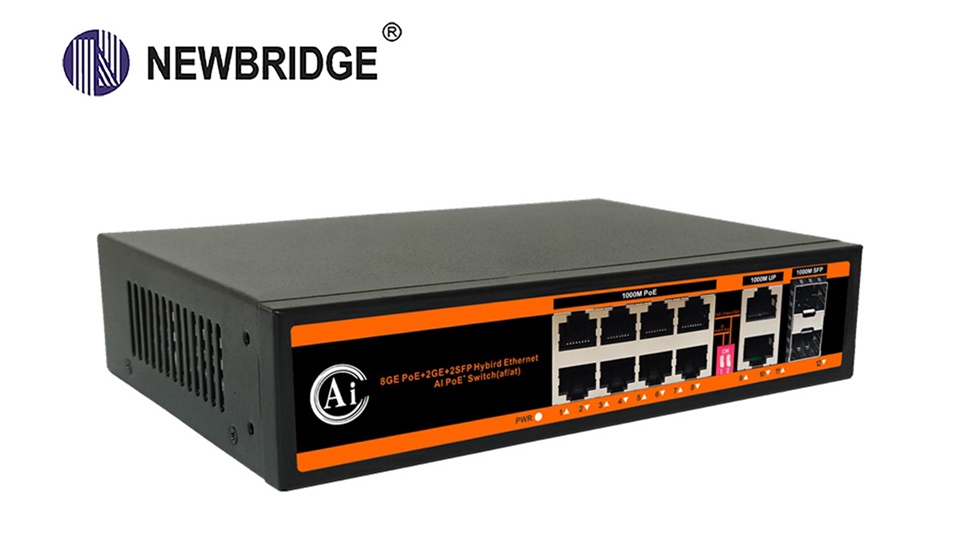PoE (Power over Ethernet) switches are significantly different from ordinary non-PoE switches in terms of functions, application scenarios, and technical features. The following are the specific differences between the two:
1. Functional differences
PoE switch: Equipped with Power over Ethernet function, it can simultaneously provide data and power to connected devices with the help of network cables. It usually combines the two functions of network switch and PoE power supply, and is a common power supply device in PoE power supply system.
Ordinary non-PoE switches: only responsible for forwarding electrical (optical) signals and do not have power supply capabilities. A separate power adapter or power cable is required to supply power to the terminal device.
2. Application scenarios
PoE switch: Mainly suitable for scenarios that require simultaneous data transmission and power supply, such as providing power supply and data transmission services for IP phones, wireless LAN access points, APs, network cameras and other equipment. Ideal for those who want to simplify wiring and reduce the need for power sockets.
Ordinary non-PoE switches: often used to connect computers, printers, gates, smart locks and other devices. These devices generally obtain power through separate power cords. Widely used in networks that do not require PoE power supply function.
3. Technical characteristics
PoE switch: Complies with international standards such as IEEE802.3af/802.3at, which effectively ensures the compatibility and security of power supply. The port supports output power up to 15.4W or 30W, which can meet the power supply needs of different devices. It has the characteristics of high flexibility, cost saving, intelligent power supply, elimination of power supply safety hazards, centralized power supply, strong equipment compatibility and easy management.
Common non-PoE switches: The technology is relatively simple and easy to implement and deploy. It has outstanding cost performance and is suitable for network environments that do not require PoE power supply function.

4. Distinguishing method
In appearance, PoE switches are indeed very similar to ordinary switches. You can differentiate between the two routers in the following ways:
Check the device label: PoE switches of regular brands are usually marked with English letters such as "-P", "PWR", "-POE" or "-XP" on the label, or "POE" is included in the product description on the front panel of the switch. words.
Use a multimeter to test: After starting the device, adjust the multimeter to the voltage measurement range, and use the two test leads of the multimeter to touch the power supply pins of the PSE device (usually 1/2, 3/6 or 4/5, 7/8 of the RJ45 port). If a stable output of 48V or other voltage values (such as 12V, 24V, etc.) is measured, the device may be a non-standard PoE switch or a fake PoE switch, because during this process, the PSE does not detect the powered device (here, a multimeter) , directly powered by 48V or other voltage values. If you can't measure voltage and the multimeter needle jumps between 2 and 10V, you probably have a standard PoE switch. Because at this stage, the PSE is detecting the PD end (here is the multimeter), and the multimeter is not a legal PD, the PSE will not supply power, so it will not generate a stable voltage.
In summary, by in-depth understanding of the functional differences, application scenarios, technical characteristics, and differentiation methods of PoE switches and ordinary non-PoE switches, we can clearly understand the differences between the two, and then according to actual needs Choose the most appropriate switch type.
